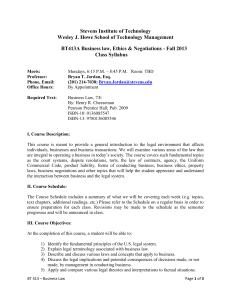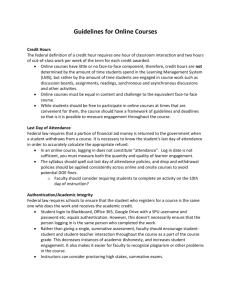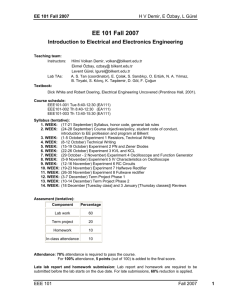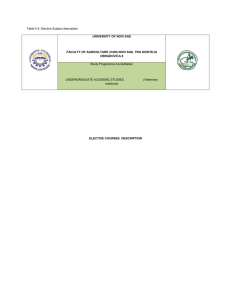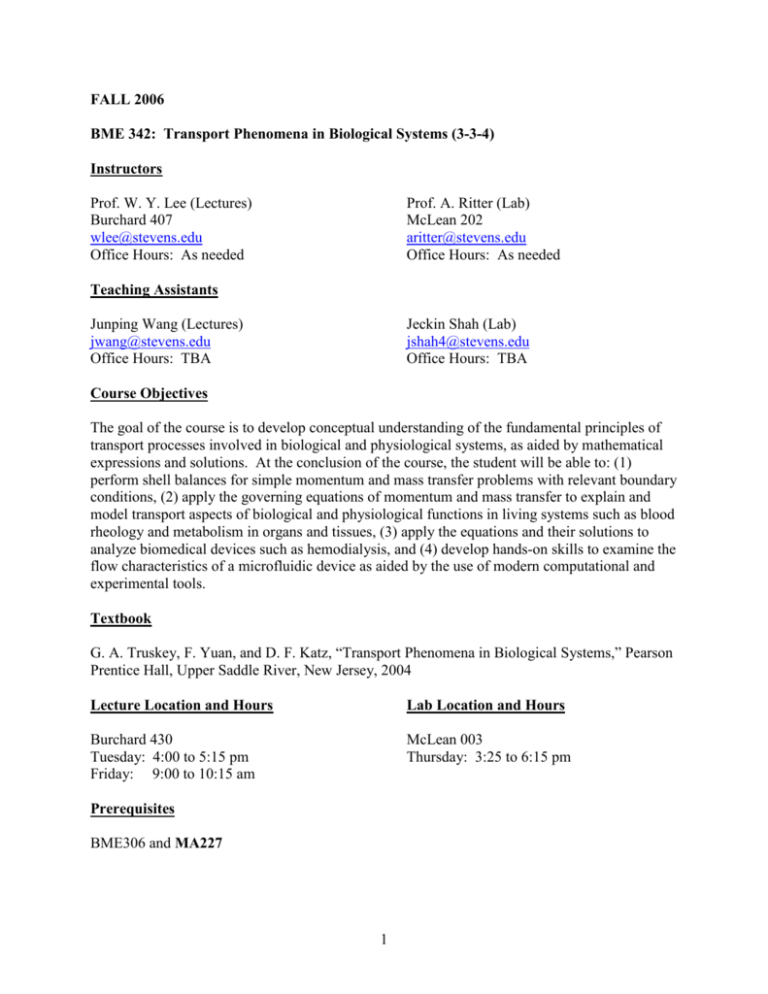
FALL 2006
BME 342: Transport Phenomena in Biological Systems (3-3-4)
Instructors
Prof. W. Y. Lee (Lectures)
Burchard 407
wlee@stevens.edu
Office Hours: As needed
Prof. A. Ritter (Lab)
McLean 202
aritter@stevens.edu
Office Hours: As needed
Teaching Assistants
Junping Wang (Lectures)
jwang@stevens.edu
Office Hours: TBA
Jeckin Shah (Lab)
jshah4@stevens.edu
Office Hours: TBA
Course Objectives
The goal of the course is to develop conceptual understanding of the fundamental principles of
transport processes involved in biological and physiological systems, as aided by mathematical
expressions and solutions. At the conclusion of the course, the student will be able to: (1)
perform shell balances for simple momentum and mass transfer problems with relevant boundary
conditions, (2) apply the governing equations of momentum and mass transfer to explain and
model transport aspects of biological and physiological functions in living systems such as blood
rheology and metabolism in organs and tissues, (3) apply the equations and their solutions to
analyze biomedical devices such as hemodialysis, and (4) develop hands-on skills to examine the
flow characteristics of a microfluidic device as aided by the use of modern computational and
experimental tools.
Textbook
G. A. Truskey, F. Yuan, and D. F. Katz, “Transport Phenomena in Biological Systems,” Pearson
Prentice Hall, Upper Saddle River, New Jersey, 2004
Lecture Location and Hours
Lab Location and Hours
Burchard 430
Tuesday: 4:00 to 5:15 pm
Friday: 9:00 to 10:15 am
McLean 003
Thursday: 3:25 to 6:15 pm
Prerequisites
BME306 and MA227
1
Grading, Exam, Homework, and Attendance Policies
Lab (25%)
Lecture Attendance (15%)
Homework (20%)
Two Hourly Exams (20%): One hourly exam with the lower score will be automatically dropped.
Final Exam (20%)
Makeup hourly exams will NOT be given under any circumstance.
If you miss the final exam, an ABS grade will be given.
Homework assignment will be given out and collected on a weekly basis. Hand in your
homework at the beginning of every Tuesday lecture (unless specified otherwise).
Homework is to be pledged. You are encouraged to form a study group and work together, but
the pledge means that you have fully participated in generating the solution.
Lecture attendance will be checked. Each lecture missed without an official excuse will be
counted 5 points against 100 points that you have for the attendance part of your overall grade.
For example, with three unattended lectures, your attendance score will be 85, which will be
used as the basis for the attendance part (15%) of your final composite score and grade.
Final Grade Distribution in Fall 2005
Grade
A
AB+
B
BC+
C
CD+
D
DF
Composite Score
> 92
> 90
> 87
> 82
> 80
> 77
> 73
> 70
> 67
> 63
> 60
< 60
Number of Students
4
2
2
7
2
3
1
1
1
1
0
0
2



